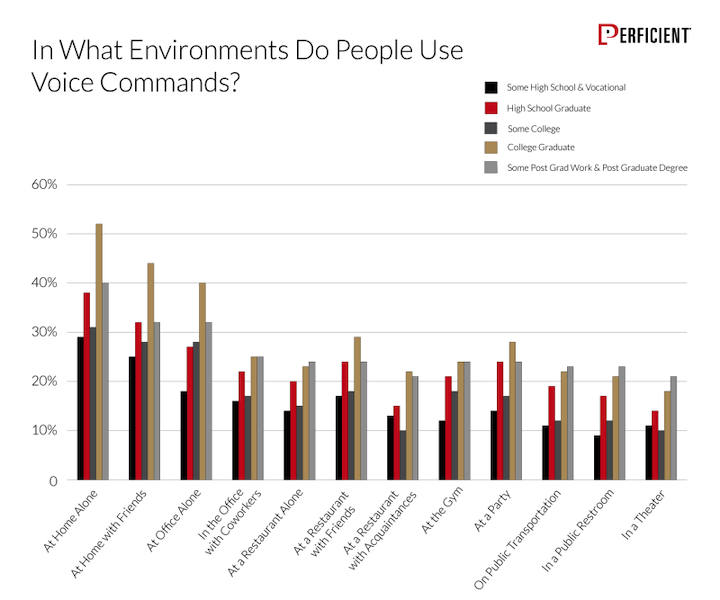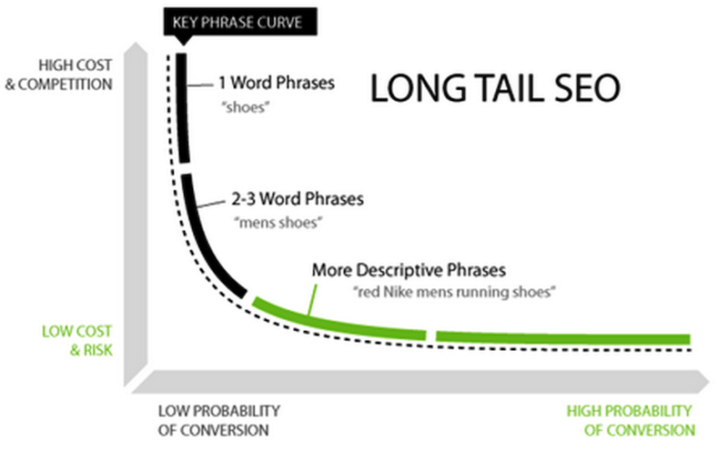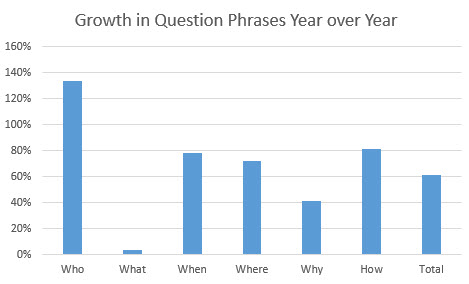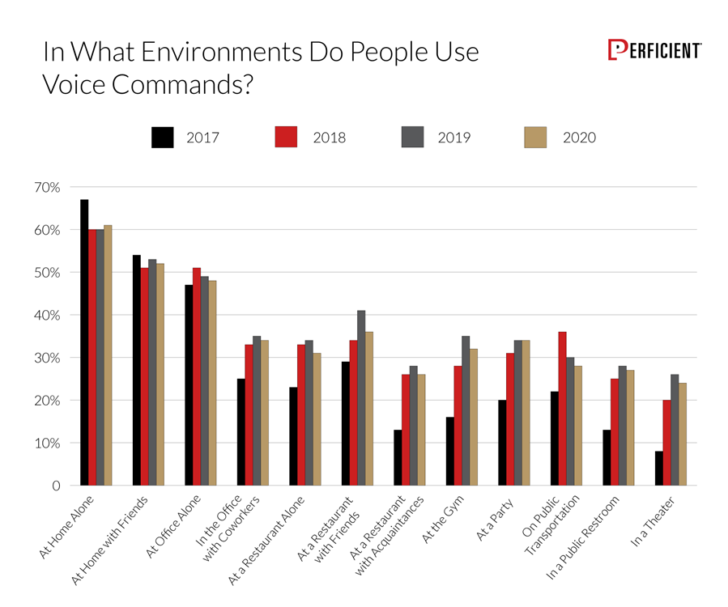30-second summary:
- An optimized content and voice search SEO is crucial to rank higher in search engines.
- Long-tail keywords are the backbone of voice searches.
- Mobile optimization goes hand-in-hand with voice search optimization.
- FAQ sections are your best friend.
Voice search is fast gaining popularity among online users. It is easier, faster, and more conversational as compared to traditional search.
As per ComScore, by 2020, 50% of all searches will be voice searches. Google also reports that 27% of online users are using voice search on mobile globally.
But to make it work, you will require optimized content and focus on voice search SEO. In this article, we will be digging into the eight best practices of optimizing just that.
Before that, what exactly is voice search SEO?
In simple terms, voice search SEO is a technique that optimizes the content, phrases, keywords, metadata, and more to enable your voice search to rank on top whenever a user asks questions. It mainly focuses on the natural language of users and delivers them answers accordingly.
The new 2020 voice search trends
1. Smart speakers are driving voice search adoption
As per emarketer, smart speaker usage is estimated to grow at a compound yearly growth rate of approximately 48% to meet the demands of more than 76 million users by 2020.
And it is said that 40 million Americans currently possess a smart speaker. Clearly, more and more households are using smart speakers these days.
Earlier, only a handful of products such as Alexa and Siri were popular. But over the years, voice technology has improved tremendously. As a result, many tech companies are releasing their own smart speakers.
2. Improvement in voice AI and machine learning (ML)
There is a remarkable improvement in artificial intelligence (AI) and machine learning (ML), and it has changed how users interact with their smart devices and search the internet.
For instance, with Google’s RankBrain, you can recognize words and phrases to predict forecast results more accurately. When it encounters a new phrase, it makes its best guess and gives answers accordingly.
3. Used to search for local products and services
People are increasingly using voice search to search for local products and services. According to statistics, 58% of people have used voice search while finding information about a local business.
Also, as per Google reports, searches for “near me” business has increased drastically over the last few years. It is indeed great news for local businesses.
4. Increase in popularity of voice SEO
To emerge at the top, marketers are regularly fine-tuning their SEO strategy to optimize for voice search. Considering that Google’s voice recognition has 95% accuracy, businesses wanting to attract more inbound traffic to their site have to implement voice SEO.
And Google alone is not working on perfecting voice recognition to make the most of voice search. China’s iFlytek speech recognition system has an accuracy rate of 98%, and the team is working to achieve 99% accuracy.
5. Voice search is more mobile than ever
Google’s voice search is now available in more than 100 languages on mobile devices.
Moreover, statistics suggest that mobile phones are used nearly 40% more than smart speakers for voice search.
And with mobile phones, people usually use voice search in different environments like at the office alone, at a restaurant, at a party, or any other location.

This trend of voice search on smartphones continues to rise – all thanks to advances in speech recognition technology.
Here are some best practices to optimize voice search SEO
1. Use long-tail keywords
Long-tail keywords are specific keywords that your target audience is likely to enter (and in this case speak) to the search engine.
People have been using long-tail keywords for a long time and seeing brilliant results with their search rankings.
Thus, it’s a great idea to use long-tail keywords to optimize voice search for a website.
In fact, according to statistics, they make up 70% of all web searches.

In voice search, you can add long-tail keywords in a more conversational tone and specify what users are looking for.
The good news is that you can use plenty of online tools to search for relevant phrases and add them to your content. Some of them include:
- Ubersuggest
- SEMrush
- HubSpot Content Strategy Tool
2. Implement schema markup
Also known as Structured Data, Schema Markup is a code that you can add to your website. It will allow search engines to understand your site’s content, what it means, and why it is there.
Schema Markup can also help search engines robots crawl and make it rank higher on search engines. Further, you can use it for improving and getting comprehensive search results that boost the user experience.
Just have a look at the example below

The second search result has a star rating and a publication date, which has been added using Schema Markup. Since the result is illustrated, the users are likely to click on it readily.
You can also implement schema markup SEO best practices to provide more information about your site to the search engines and rank higher.
3. Curate content that gives direct answers
Users don’t do voice search like they do a text search. Instead, they will probably be making longer and more specific queries.
As per research, there has been a 61% growth in question keyphrases.

The statistics reveal how people are using question keywords to ask queries through voice search.
Thus, it’s an excellent idea to curate your content to answer their queries. However, make sure that you write great content that is valuable to your target audience. It will satisfy your user and, at the same time, increase the chances of appearing in featured snippets.
4. Optimize your Google My Business page
Another way to rank higher for voice searches is to optimize your Google My Business page.
Actually, it’s one of the easiest ways to get discovered by your target audience when they voice out their queries in Google. You just have to make sure that your content, images, and information are complete and precise.
Additionally, implement your prevailing local SEO strategy along with targeting how users are phrasing their queries. As per reports, 76% of smart speaker-users carry out local searches at least once a week. Thus, local SEO is as crucial as entering relevant info and images.
5. Work on increasing domain authority
Websites with many links pointing to them rank higher in regular search. And it is the same for voice search.
A study by Brian Dean, which examined 10,000 Google Home search results, found that sites with more links rank more often in voice search.
As soon as you put in your voice query, the Google search engine will provide results from high authority websites.
Here are some of the ways to increase your domain authority to rank higher in voice search:
- Optimize your on-page content
- Apply optimal internal linking strategies
- Remove bad and spammy links
- Make your site mobile-friendly
6. Make your site mobile-optimized
Everyone surfs the internet via smartphones these days since it’s convenient and accessible. It is only evident that most users will do their voice search from mobile.
The graph below shows the different environments where people use voice search.

Since voice searches are mostly done via mobile phones, mobile optimization is crucial.
Some useful tips for mobile-optimization site include:
- Optimizing your mobile pages with AMP
- Checking your site’s speed using GTMetrix and working to boost it
- Creating mobile-responsive web pages
- Taking advantage of responsive landing page builders
- Creating content to be more readable on smartphones
- Regularly testing your website with Google’s mobile-friendly test tool
7. Optimize site speed
Your page speed is going to play a significant role in voice search SEO. Studies show that the pages that rank higher in search engines after doing a voice search load in 4.6 seconds. They are also 52% faster compared to average pages.
Thus, optimizing your site speed is essential if you want to rank higher in search engines.
To increase your page speed, you can implement tricks like:
- Using a CDN
- Choosing a great web hosting platform that provides fast page load speed and uptime
- Optimizing the image size on your website
- Limiting the number of plugins
- Using website caching
- Reducing the use of web fonts
8. Create voice search FAQ pages
Crafting voice search FAQ pages will benefit you a lot since question keywords are very popular.
According to statistics, voice search results come more from FAQ pages than desktops.

The best part is that FAQ pages can rank for several voice search queries. Moreover, they are concise and answer precisely what the users are looking for.
Therefore, Google usually pulls out the answer from your FAQ page whenever users do a voice search.
Wrapping up
Voice search is convenient and straightforward to use. No wonder it is gaining popularity among online users. But unless you optimize your voice search for SEO, users won’t be able to find your content.
Implementing all the eight tips mentioned in this article to optimize your site for voice search SEO can help you a great deal. These are tried and tested tips and will definitely work.
Plus, when you optimize your site for voice search SEO, you will be optimizing your website in general and rank higher in search engines either way.
The post Voice search SEO guide: Trends and best practices appeared first on Search Engine Watch.
from SEO – Search Engine Watch https://ift.tt/3bj5PCR
via IFTTT

No comments:
Post a Comment